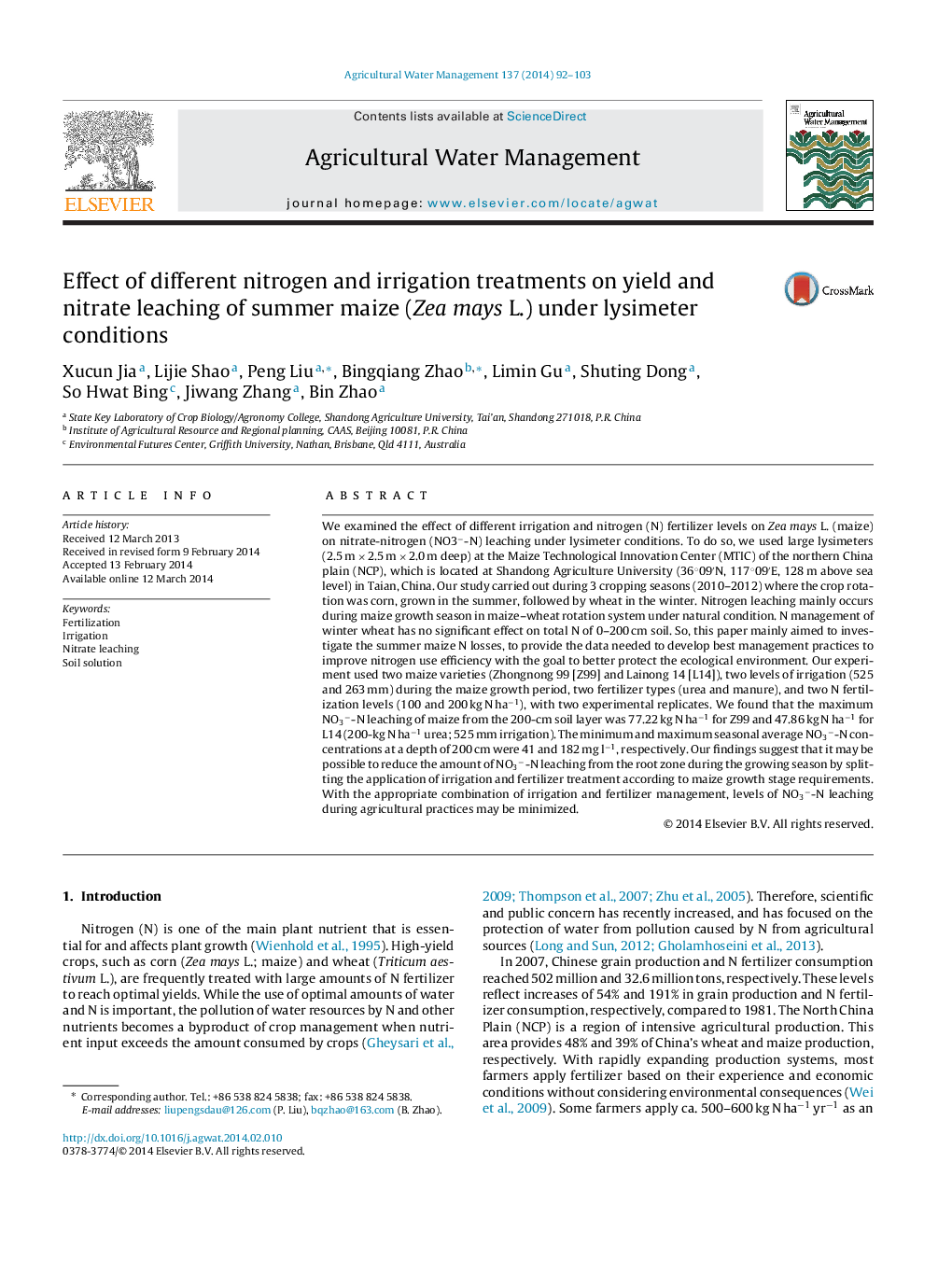| کد مقاله | کد نشریه | سال انتشار | مقاله انگلیسی | نسخه تمام متن |
|---|---|---|---|---|
| 4478769 | 1622942 | 2014 | 12 صفحه PDF | دانلود رایگان |

• Under lysimeter condition, high nitrogen fertilizer rate of maize resulted in higher nitrate content in leaching water, and make a risky pollution of underground water.
• N fertilizer rate, irrigation and their interaction affect nitrate leaching and nitrogen ammonia volatilization loss.
• The loss of nitrogen of organic fertilizer (manure) is lower than urea.
We examined the effect of different irrigation and nitrogen (N) fertilizer levels on Zea mays L. (maize) on nitrate-nitrogen (NO3−-N) leaching under lysimeter conditions. To do so, we used large lysimeters (2.5 m × 2.5 m × 2.0 m deep) at the Maize Technological Innovation Center (MTIC) of the northern China plain (NCP), which is located at Shandong Agriculture University (36°09′N, 117°09′E, 128 m above sea level) in Taian, China. Our study carried out during 3 cropping seasons (2010–2012) where the crop rotation was corn, grown in the summer, followed by wheat in the winter. Nitrogen leaching mainly occurs during maize growth season in maize–wheat rotation system under natural condition. N management of winter wheat has no significant effect on total N of 0–200 cm soil. So, this paper mainly aimed to investigate the summer maize N losses, to provide the data needed to develop best management practices to improve nitrogen use efficiency with the goal to better protect the ecological environment. Our experiment used two maize varieties (Zhongnong 99 [Z99] and Lainong 14 [L14]), two levels of irrigation (525 and 263 mm) during the maize growth period, two fertilizer types (urea and manure), and two N fertilization levels (100 and 200 kg N ha−1), with two experimental replicates. We found that the maximum NO3−-N leaching of maize from the 200-cm soil layer was 77.22 kg N ha−1 for Z99 and 47.86 kg N ha−1 for L14 (200-kg N ha−1 urea; 525 mm irrigation). The minimum and maximum seasonal average NO3−-N concentrations at a depth of 200 cm were 41 and 182 mg l−1, respectively. Our findings suggest that it may be possible to reduce the amount of NO3−-N leaching from the root zone during the growing season by splitting the application of irrigation and fertilizer treatment according to maize growth stage requirements. With the appropriate combination of irrigation and fertilizer management, levels of NO3−-N leaching during agricultural practices may be minimized.
Journal: Agricultural Water Management - Volume 137, 1 May 2014, Pages 92–103